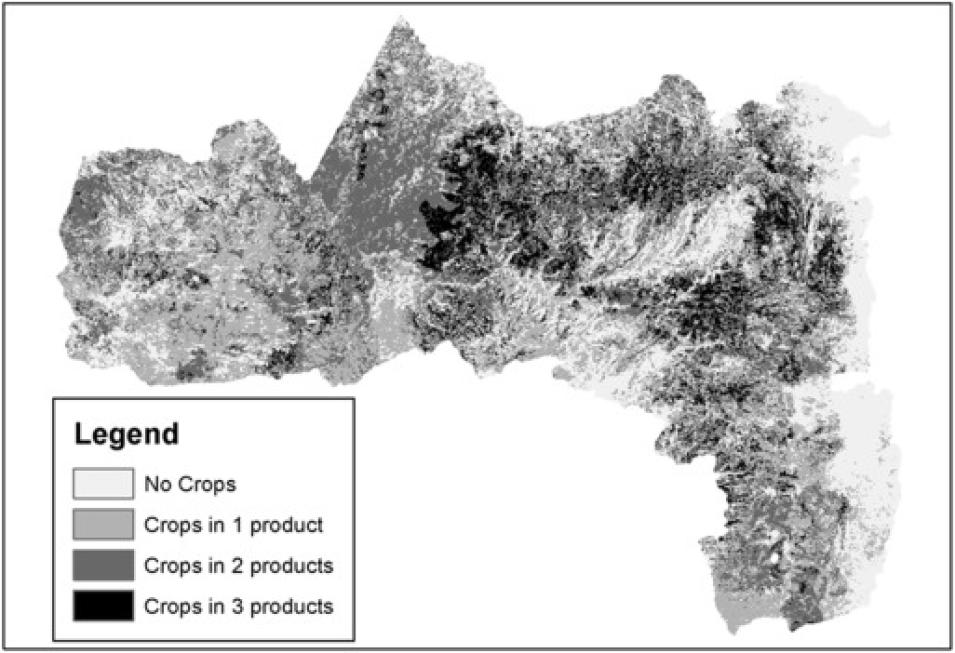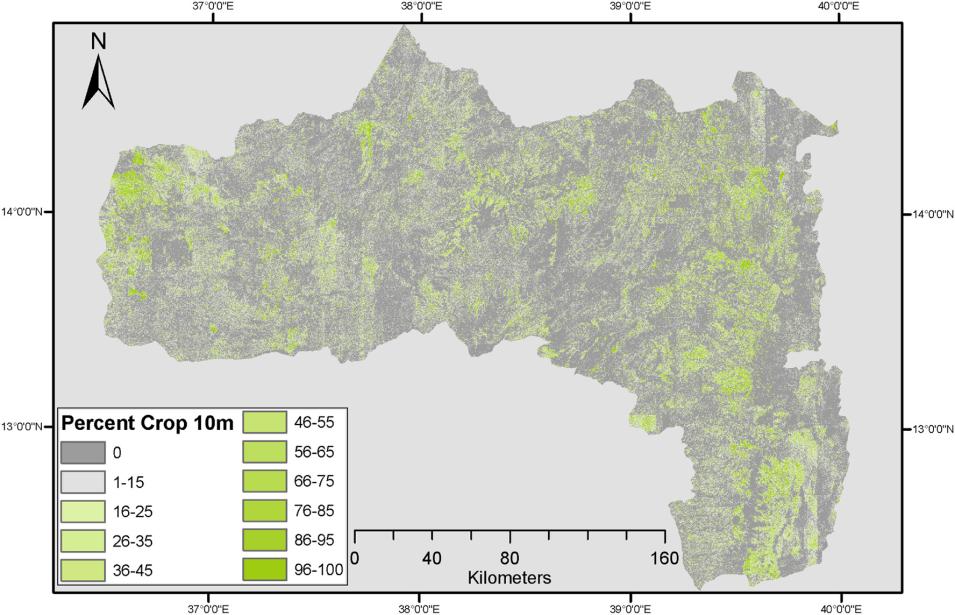Small farms play a large role in food security, especially in sub-Saharan Africa and Asia. In fact, small farms (measuring less than 2 hectares or 20,000 square meters) produce about one-third of the world's food supply. But the size of these farms can make them difficult to map using coarse or moderate resolution satellite imagery.
The resolution of data from the Moderate Resolution Imaging Spectroradiometer (MODIS) instruments (250 meters) and the joint NASA/USGS Landsat instruments (30 meters) is often too coarse to accurately map very small farm fields in Tigray, Ethiopia, says Dr. Christopher Neigh, Research Physical Scientist at NASA's Goddard Space Flight Center in Greenbelt, Maryland. Crop maps produced from moderate resolution instruments often don't agree, Neigh and colleagues found. When they compared three moderate resolution crop maps for Tigray, only 8 percent of crop area was mapped by all three products.
Neigh is principal investigator of a research project that aims to assess the viability of using high-resolution commercial small satellite data to better understand small-scale agriculture productivity, through the Commercial SmallSat Data Acquisition (CSDA) Program. CSDA was established to identify, evaluate, and acquire data from commercial sources that support NASA's Earth science research and application goals.


